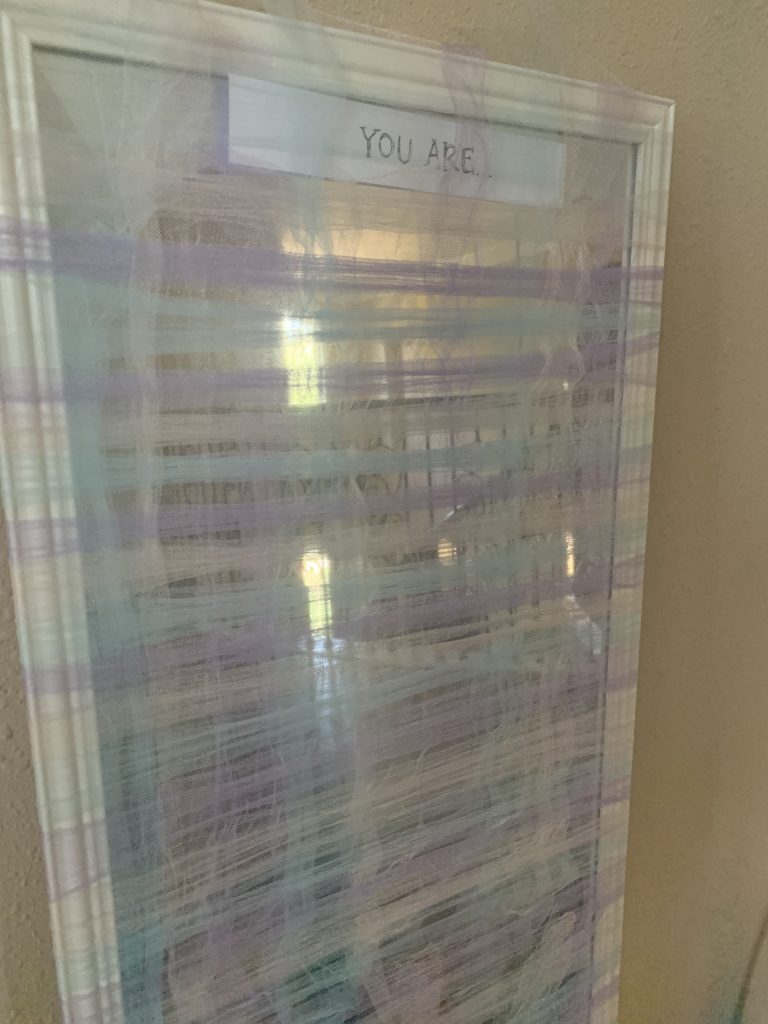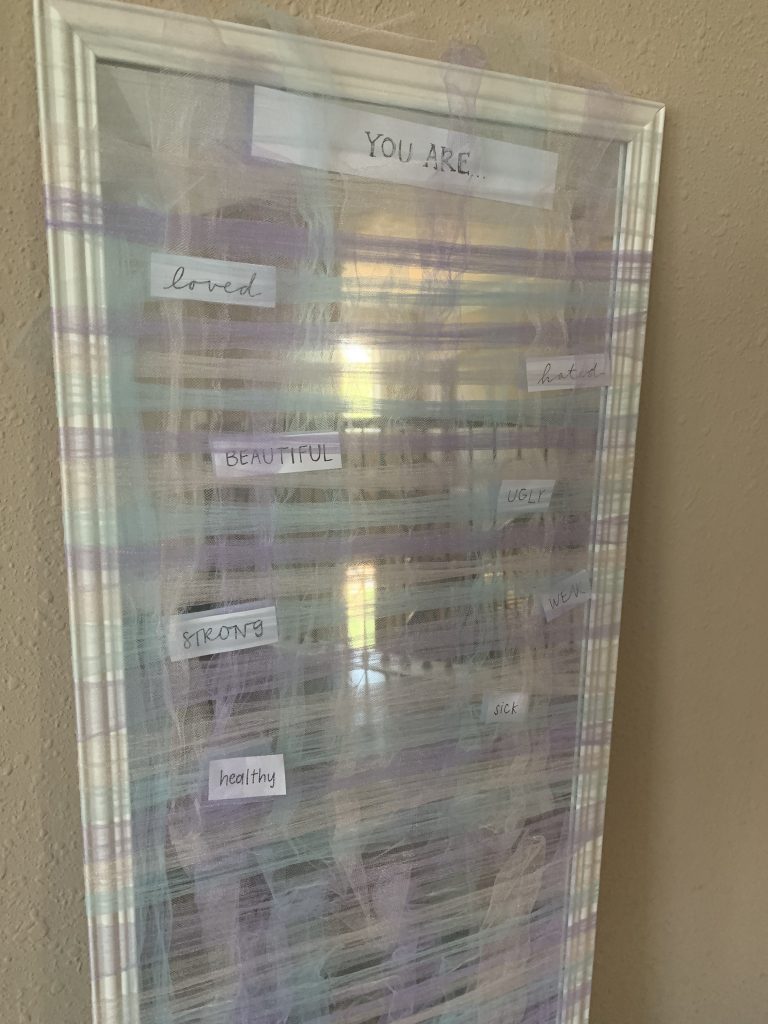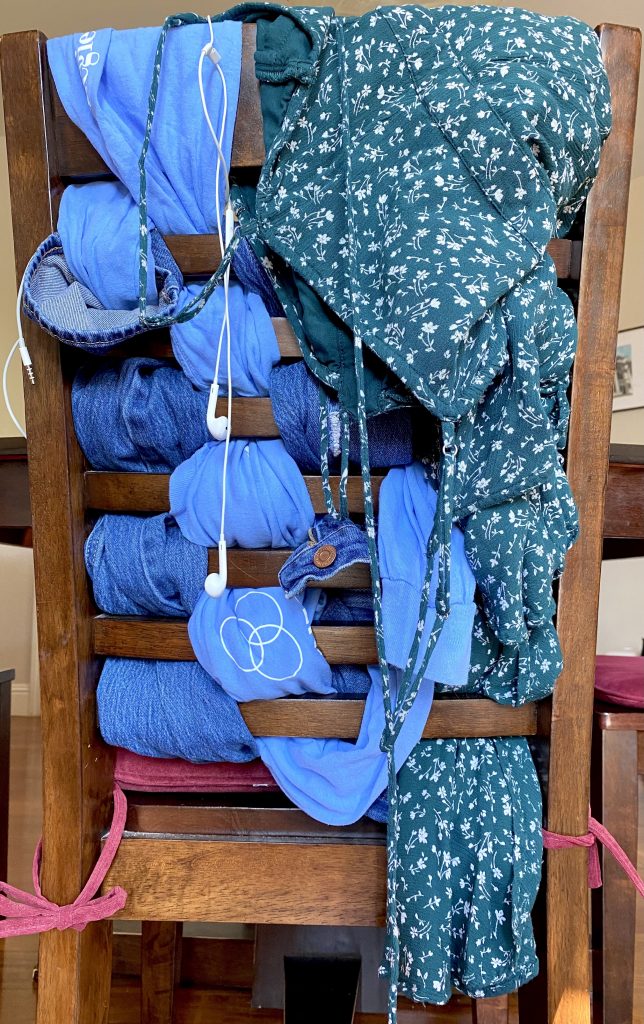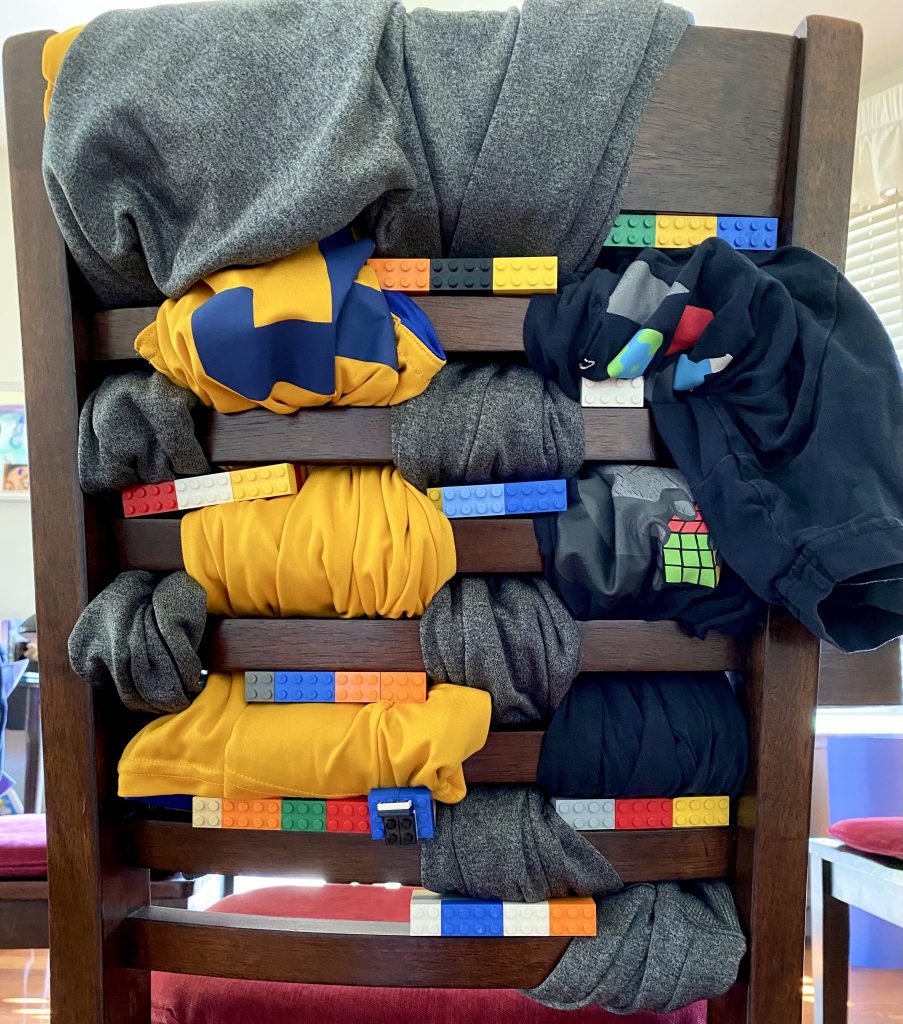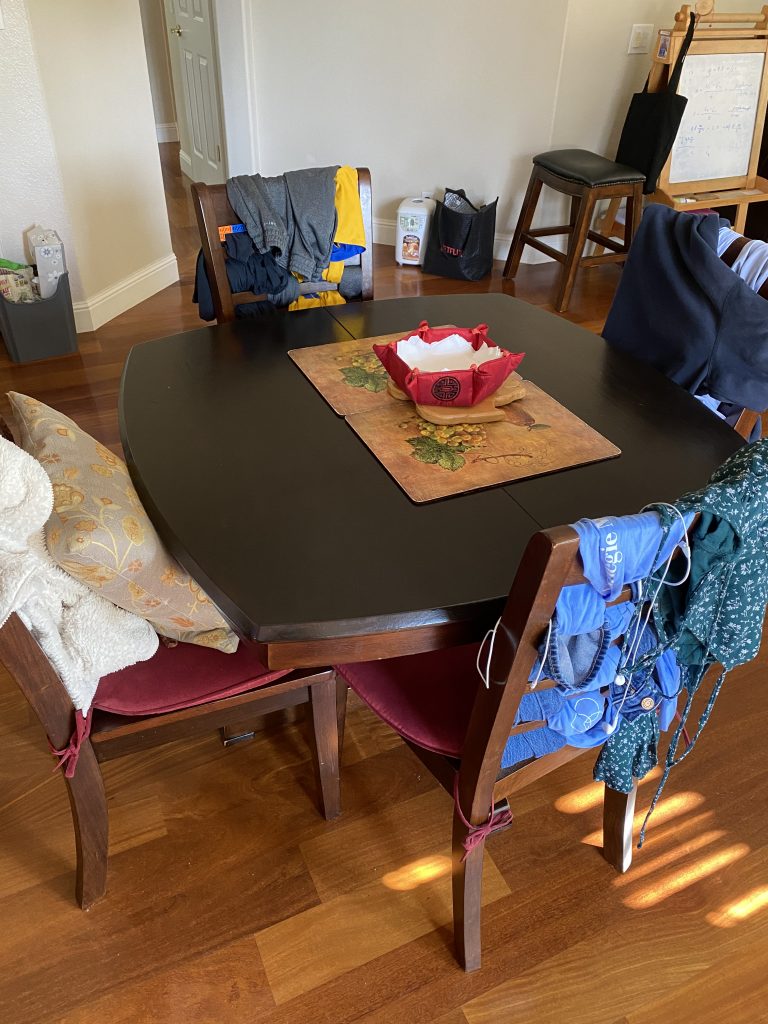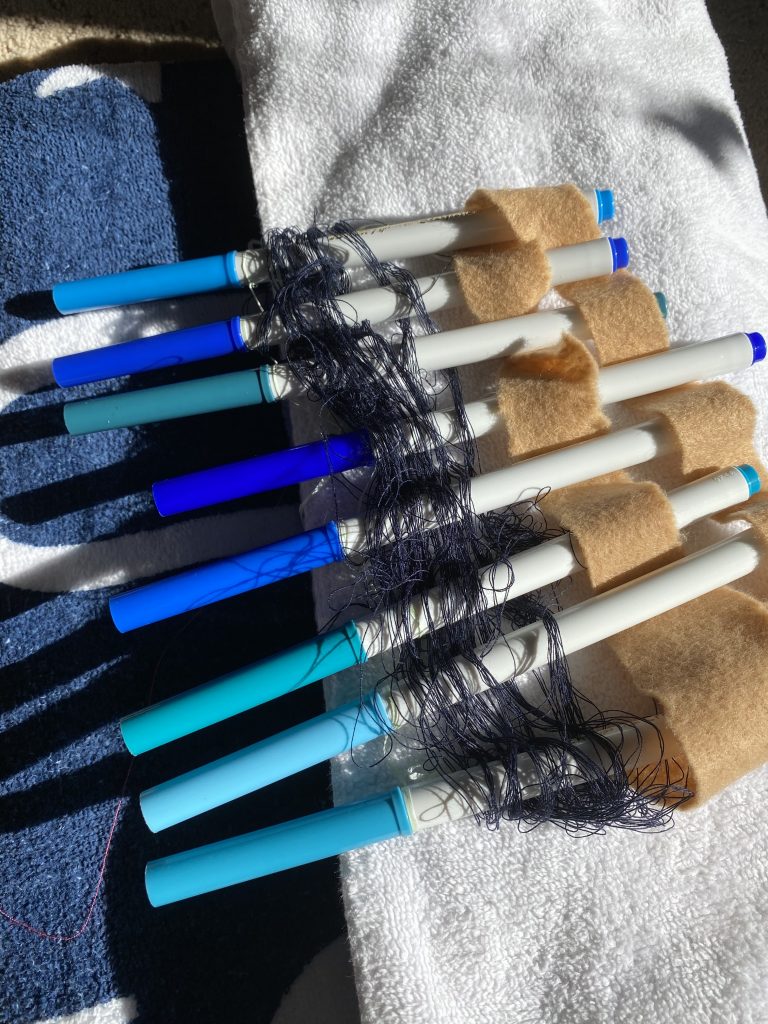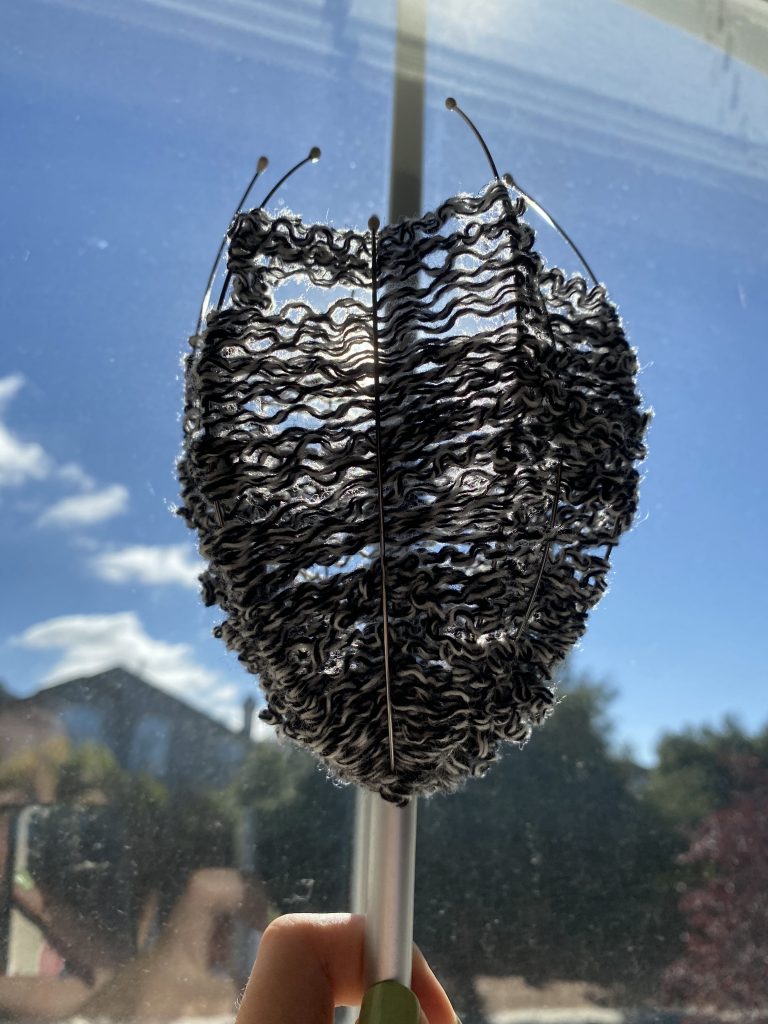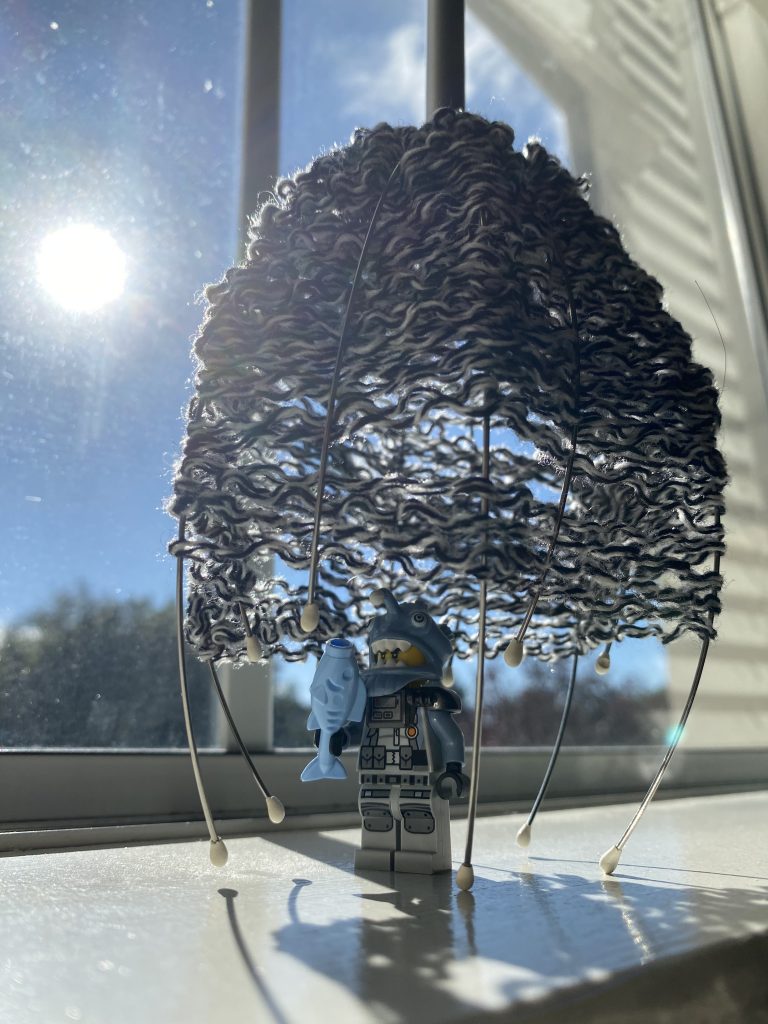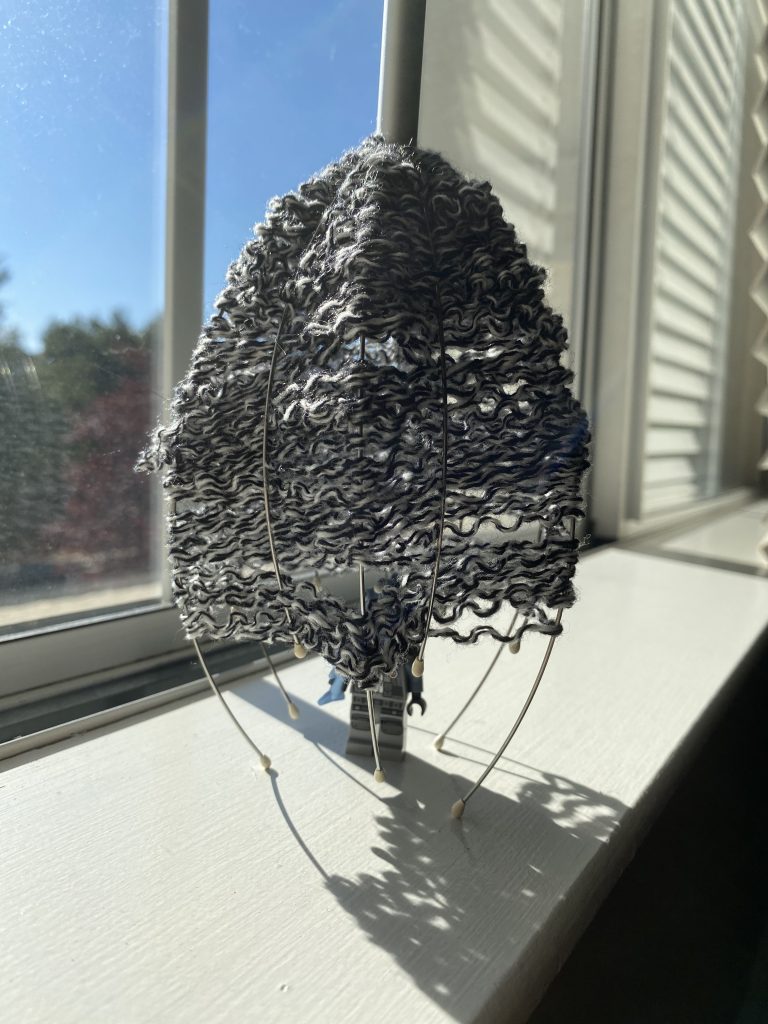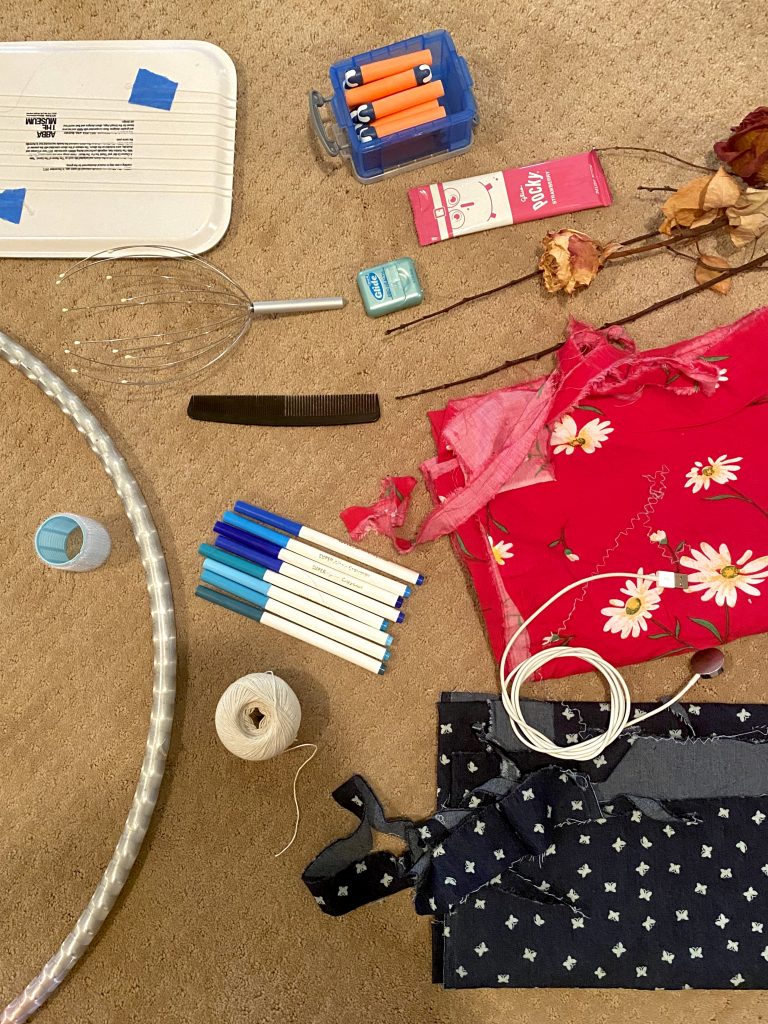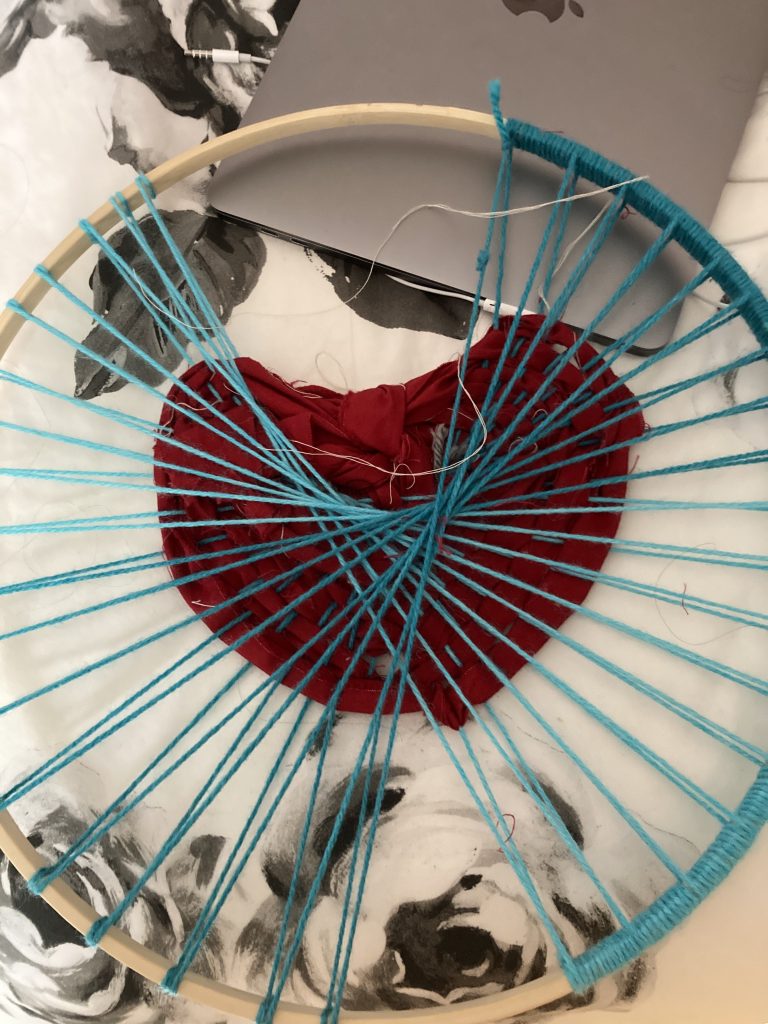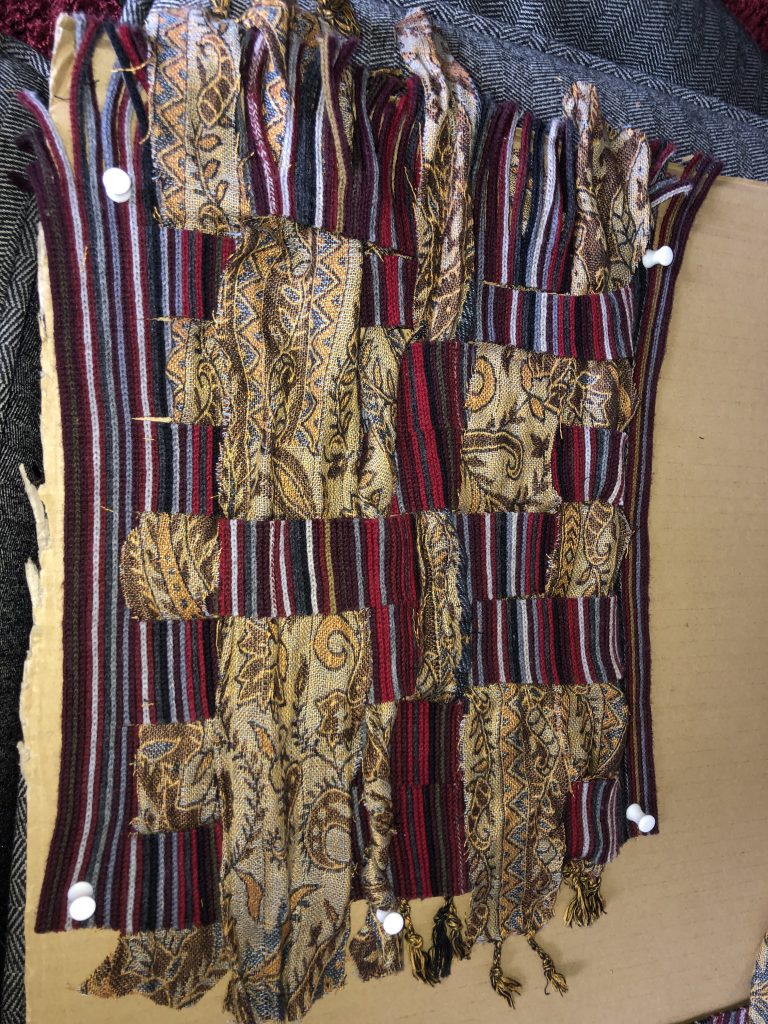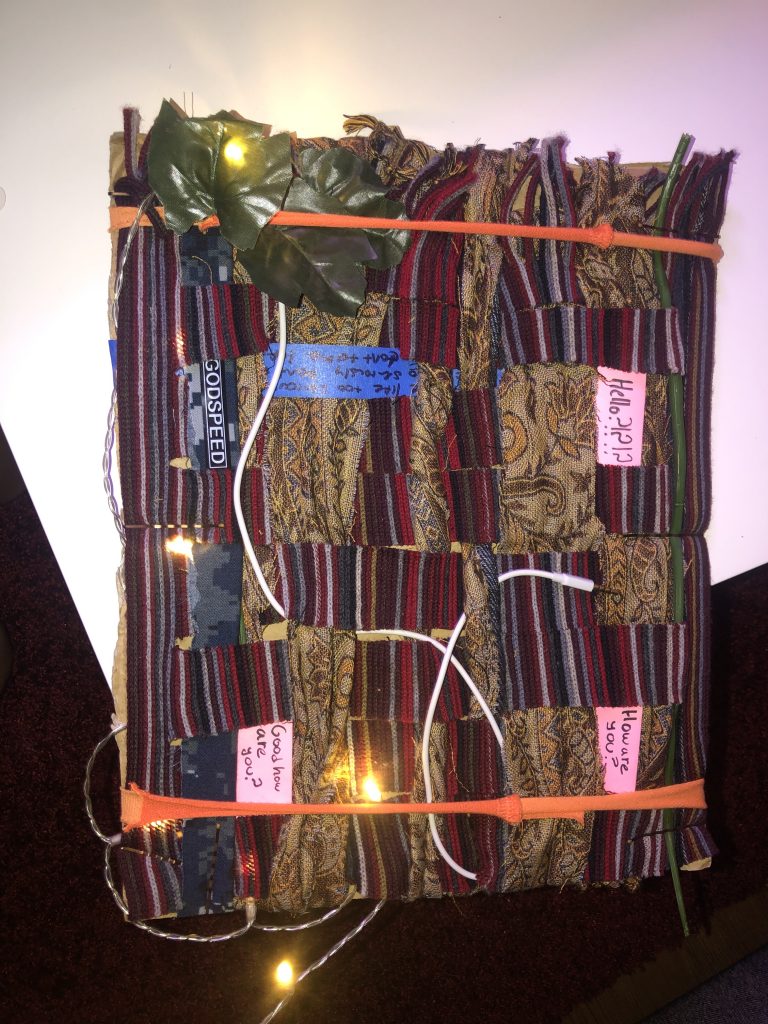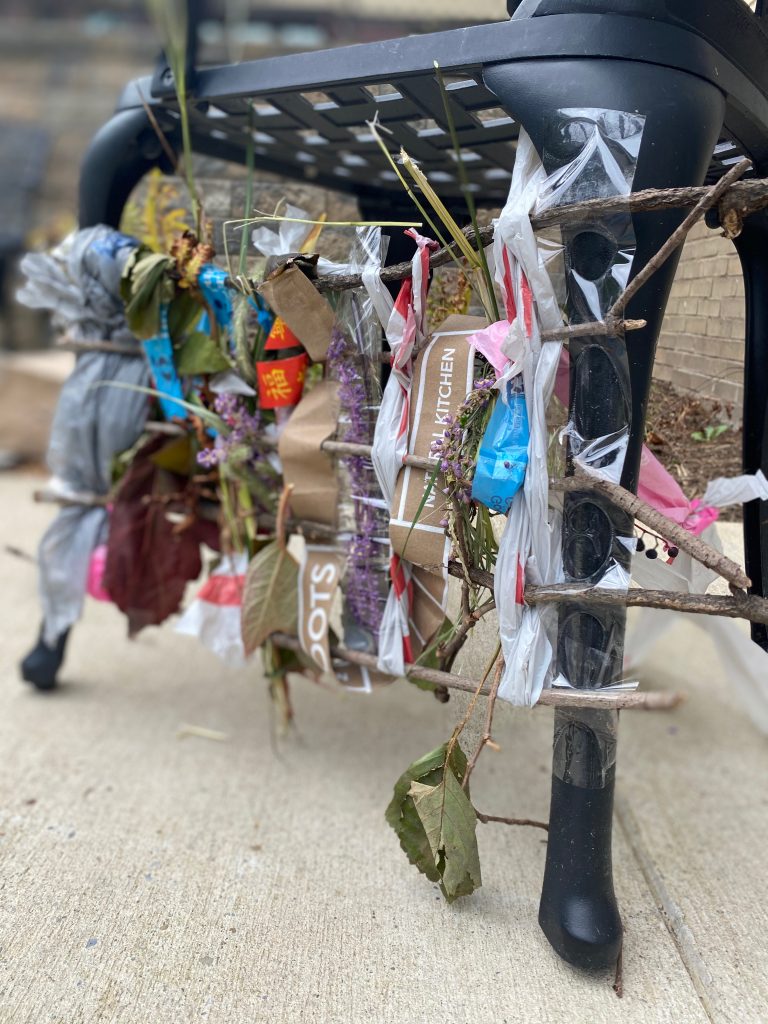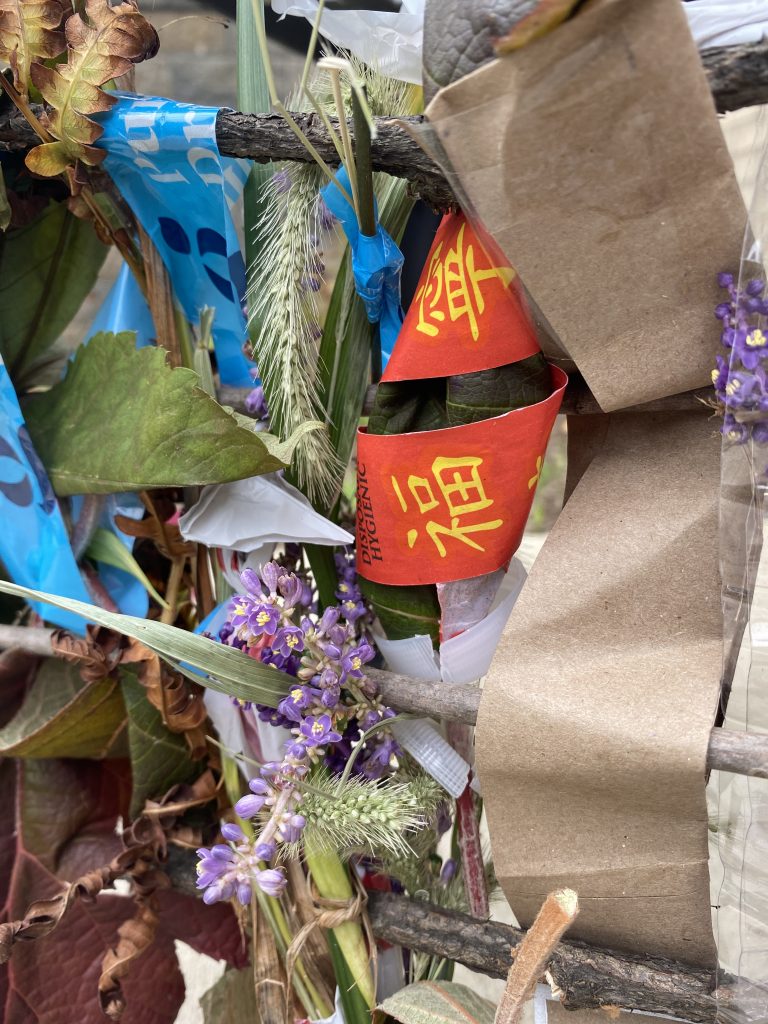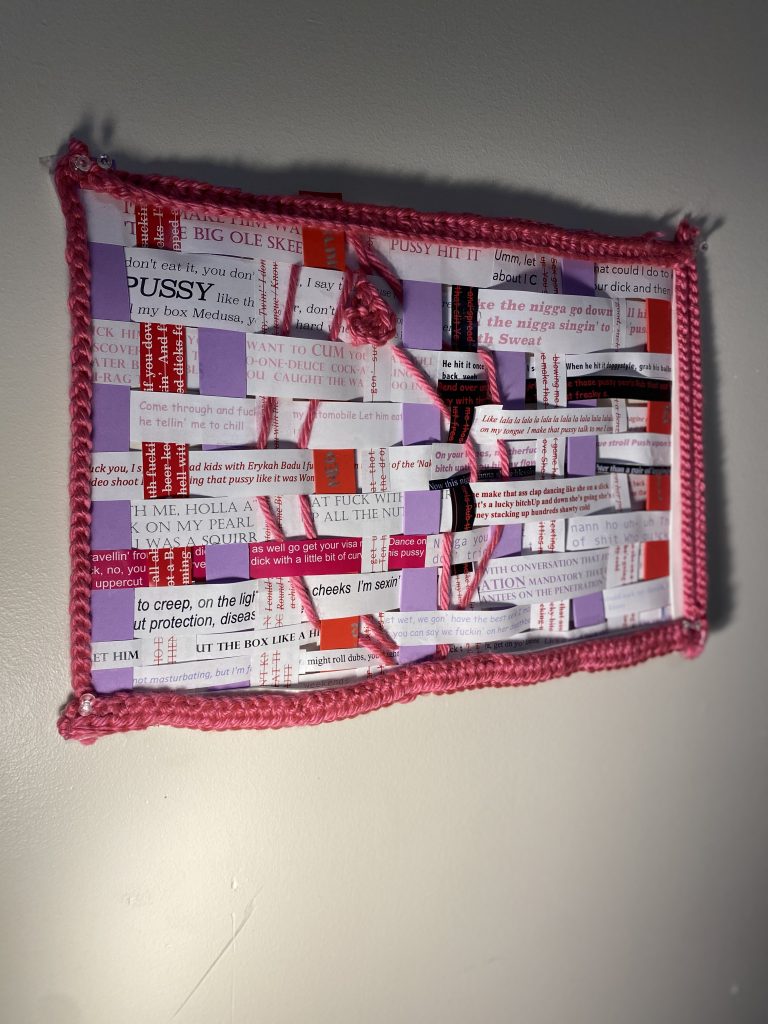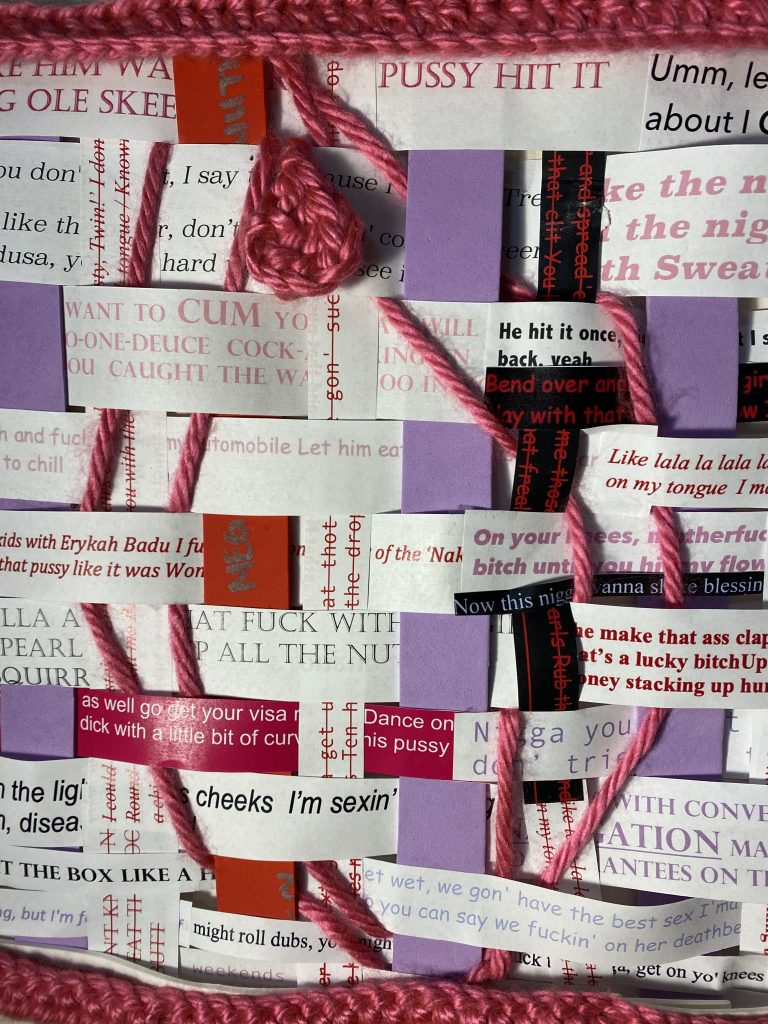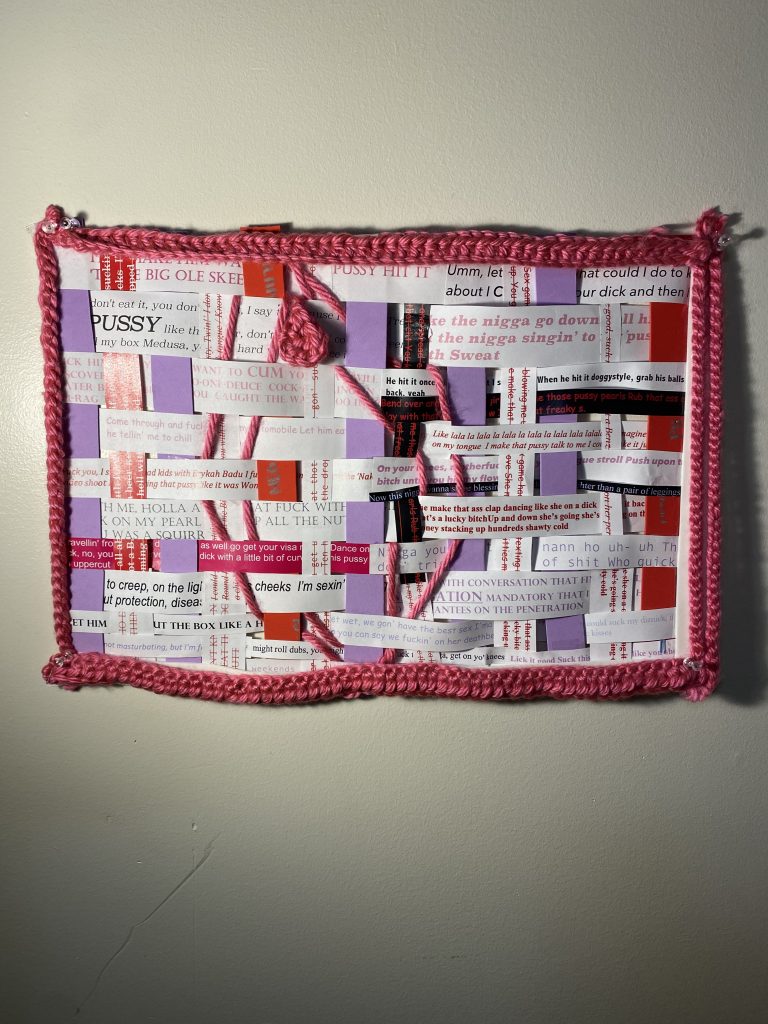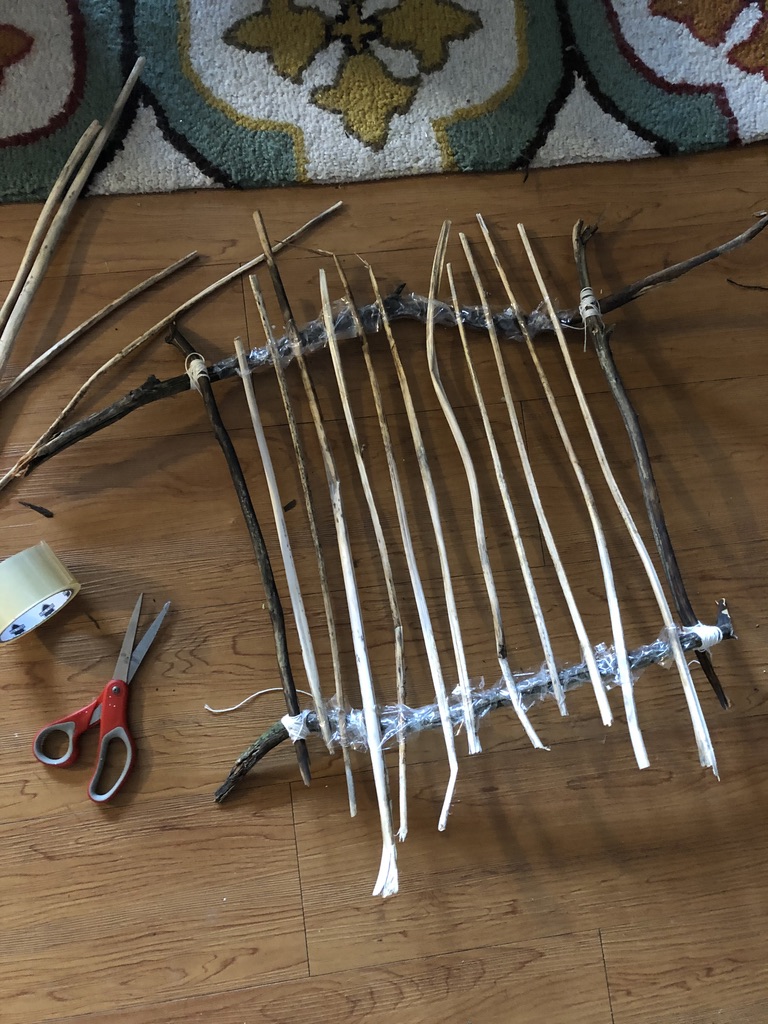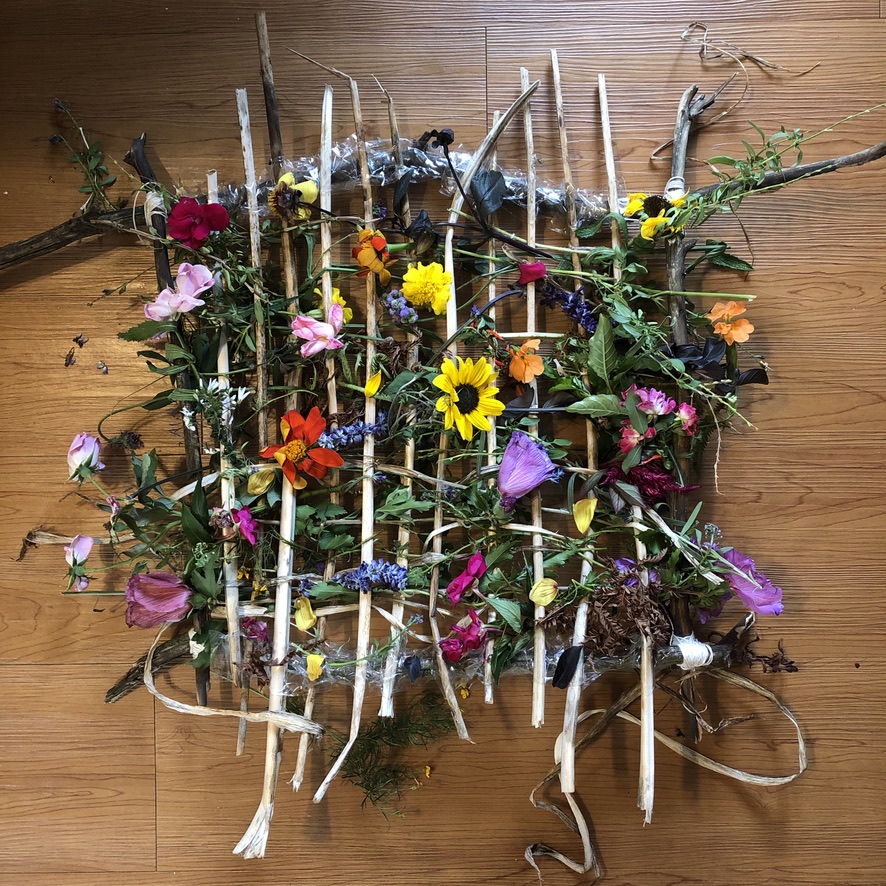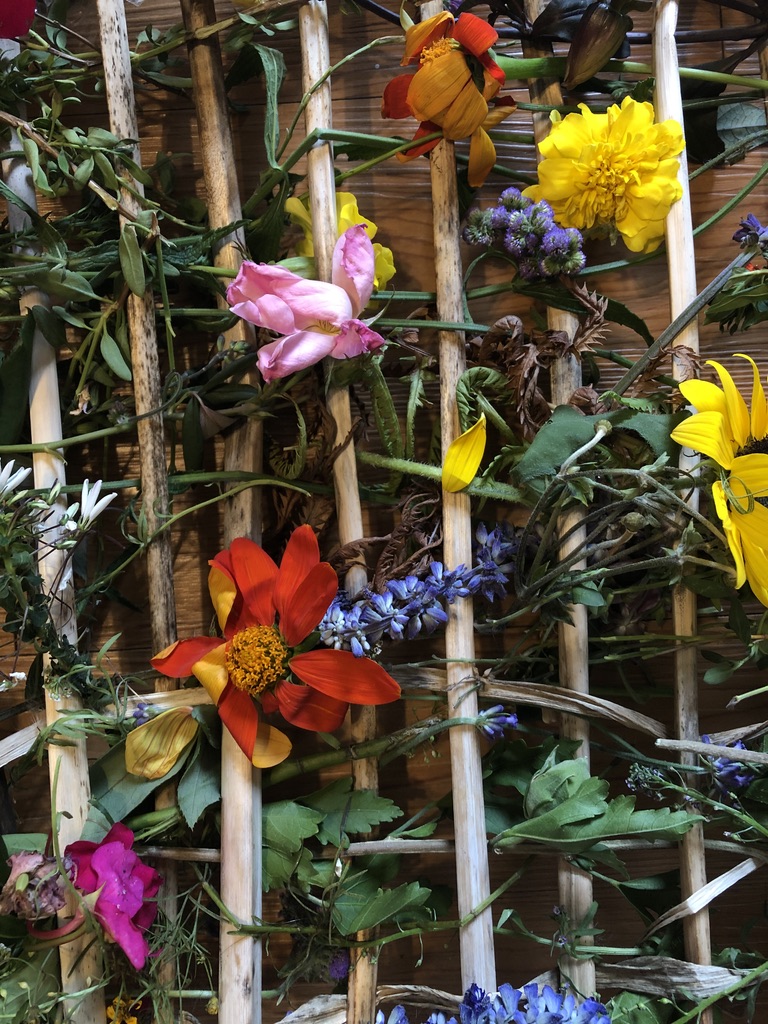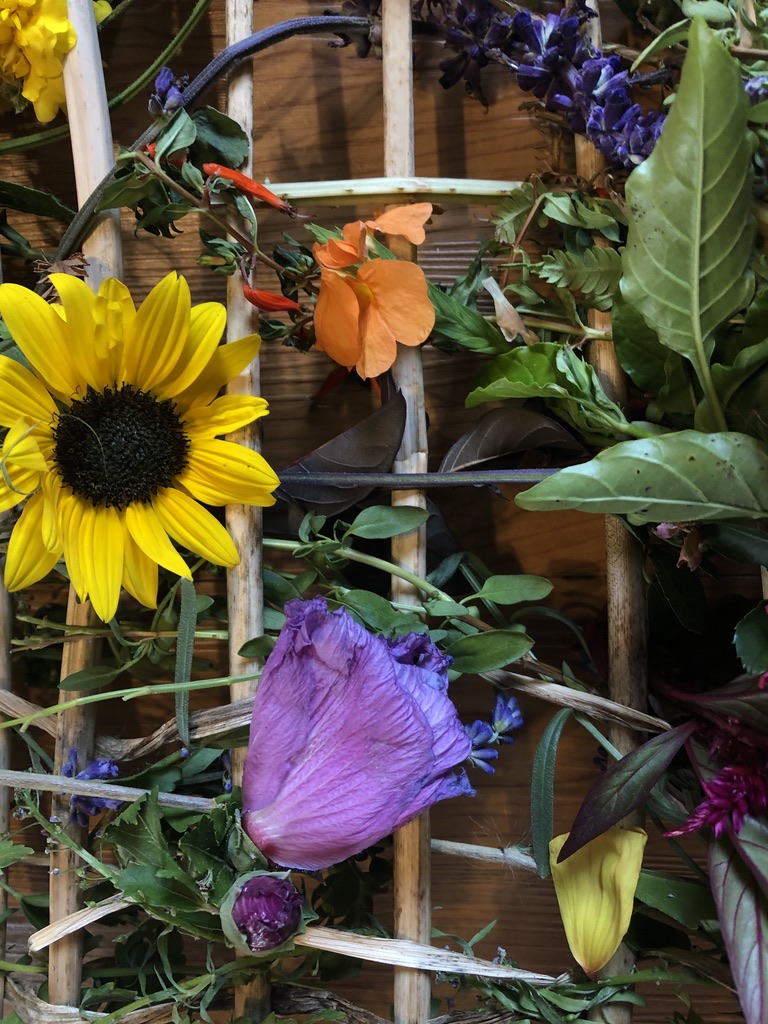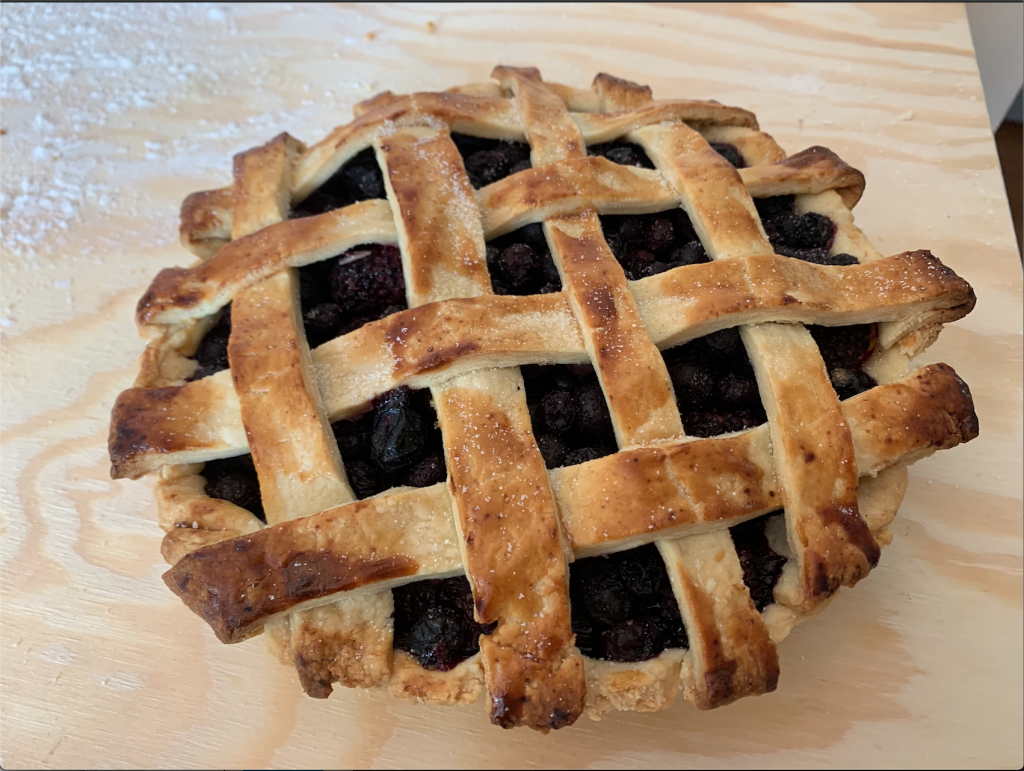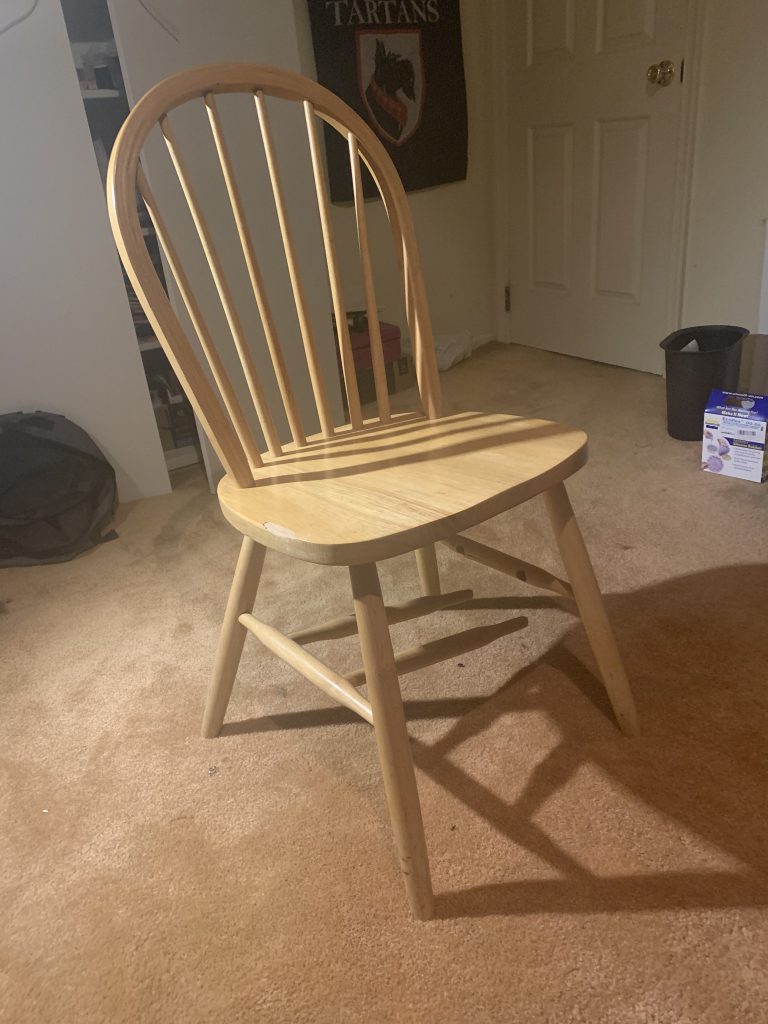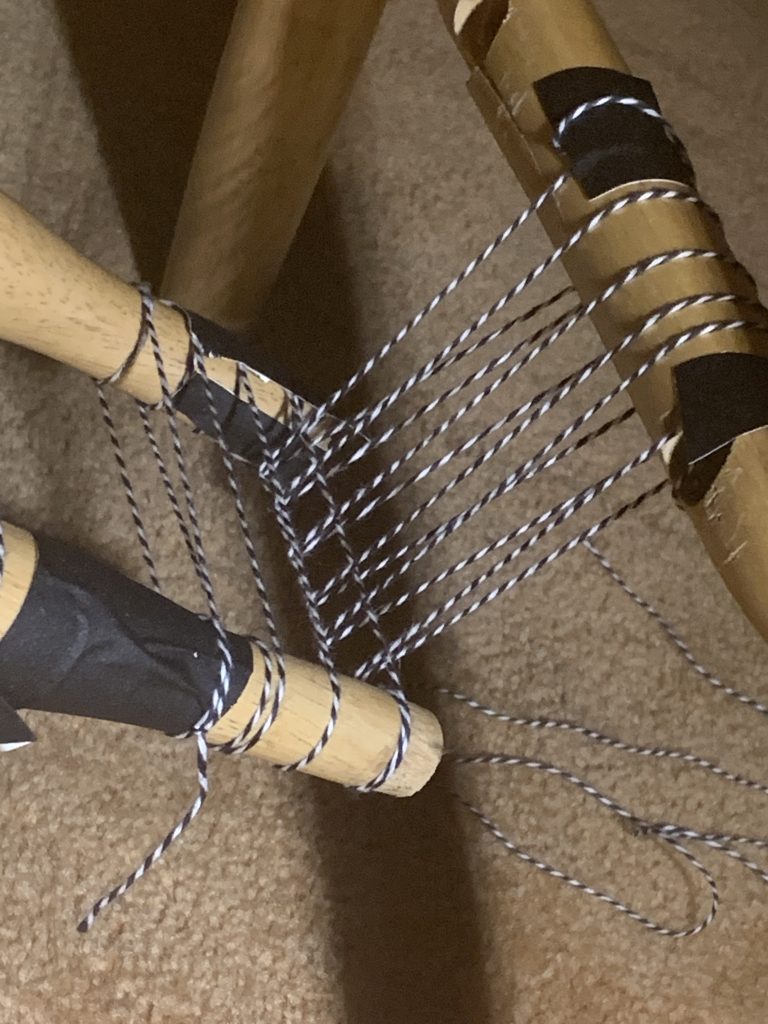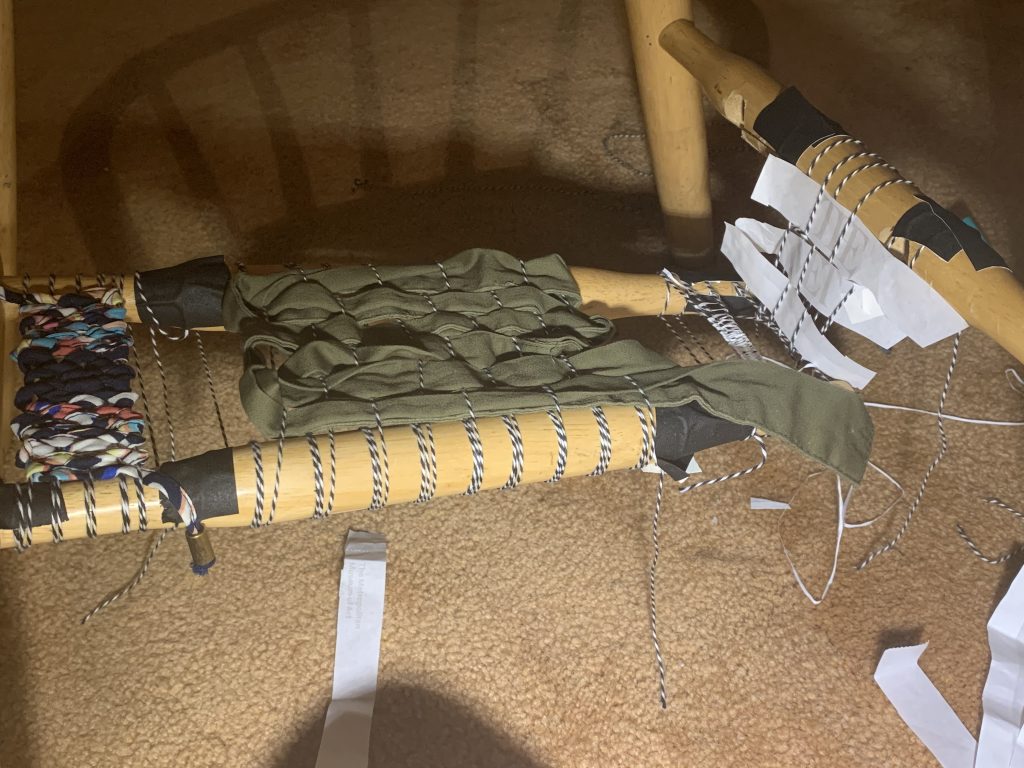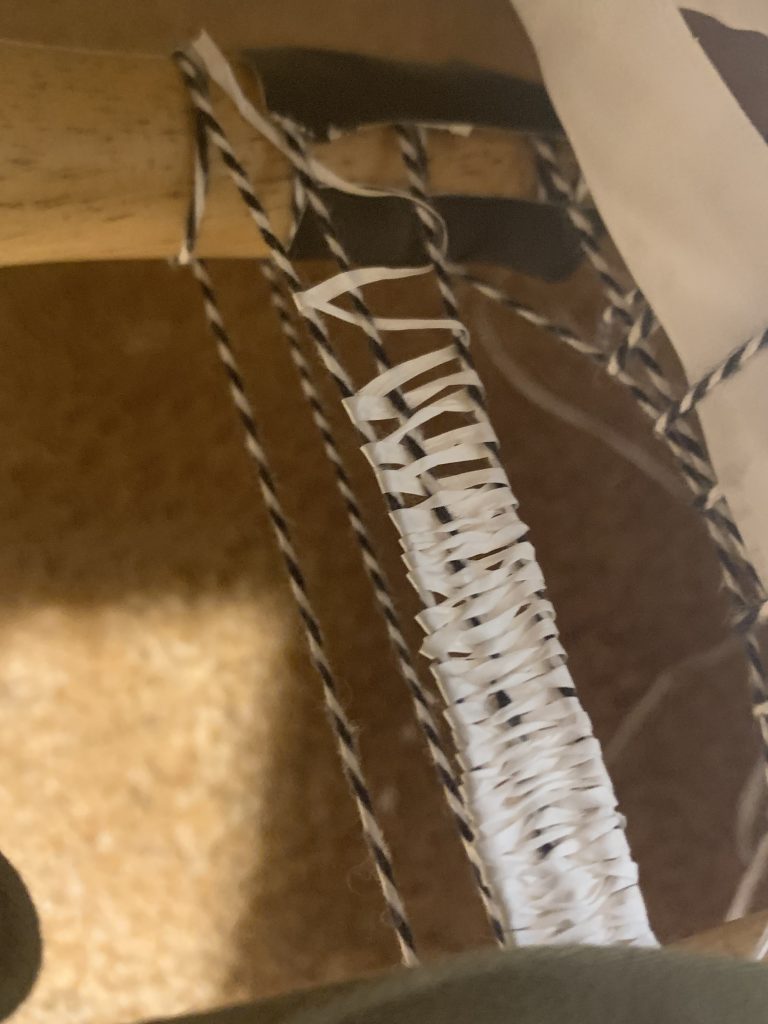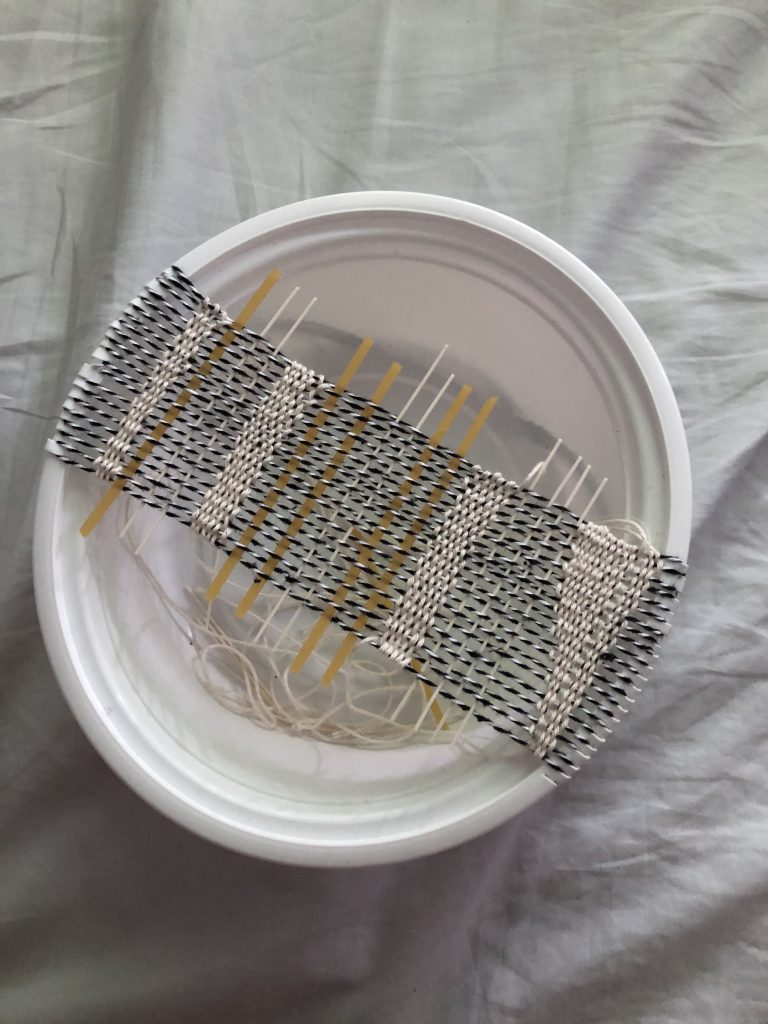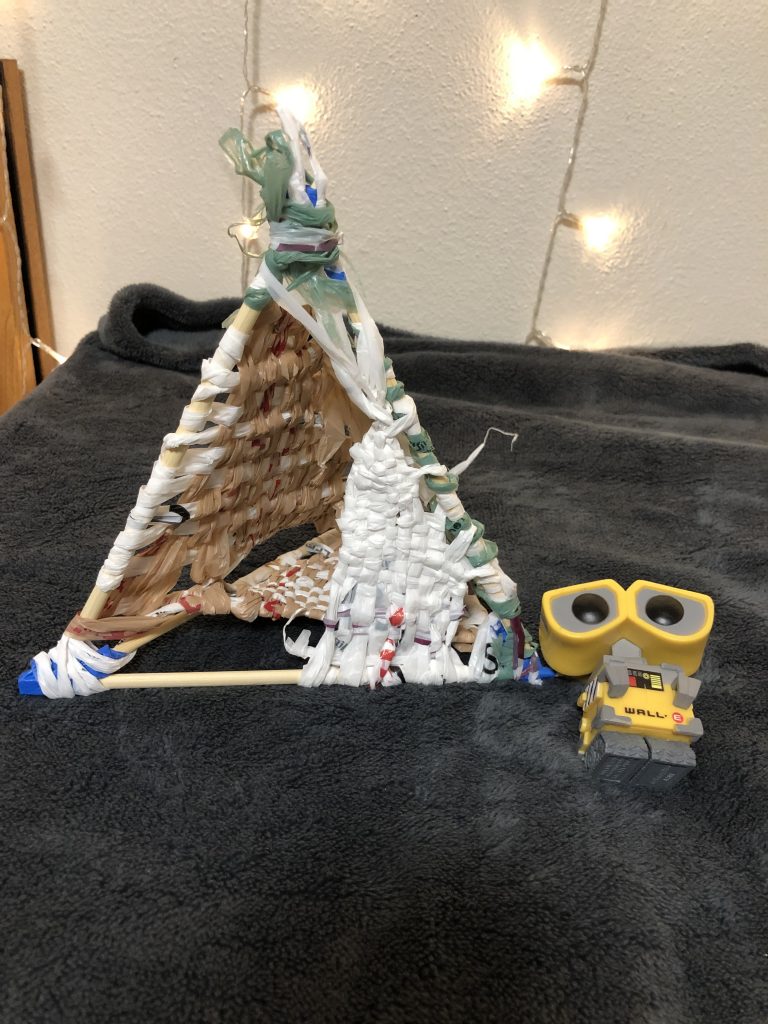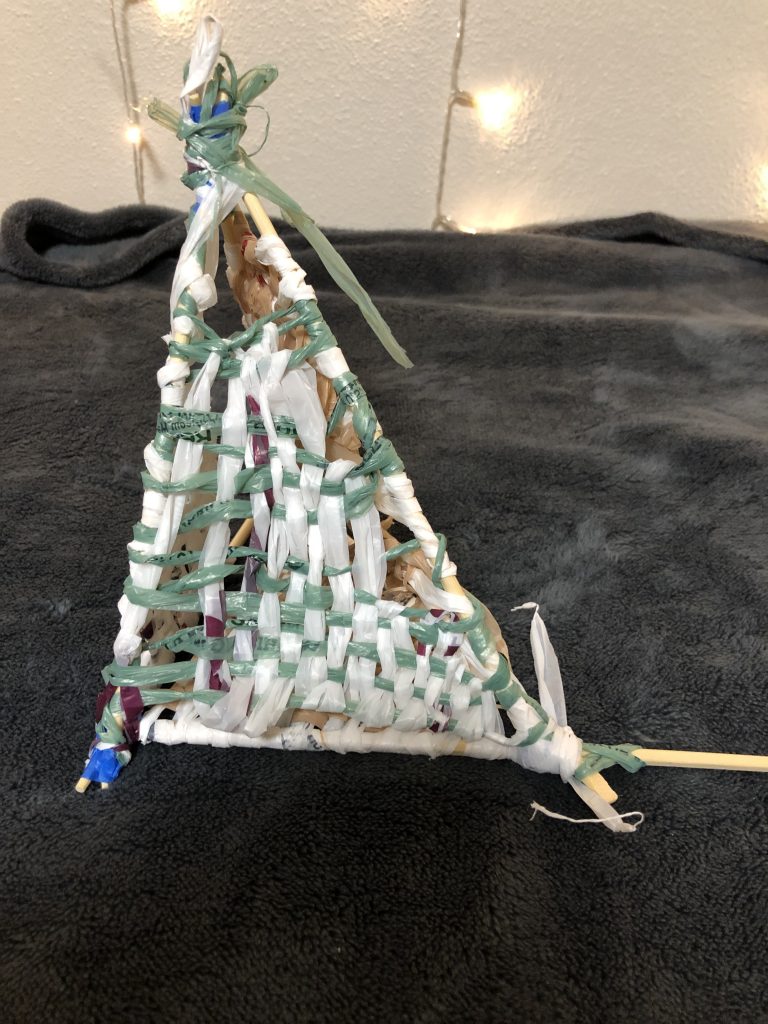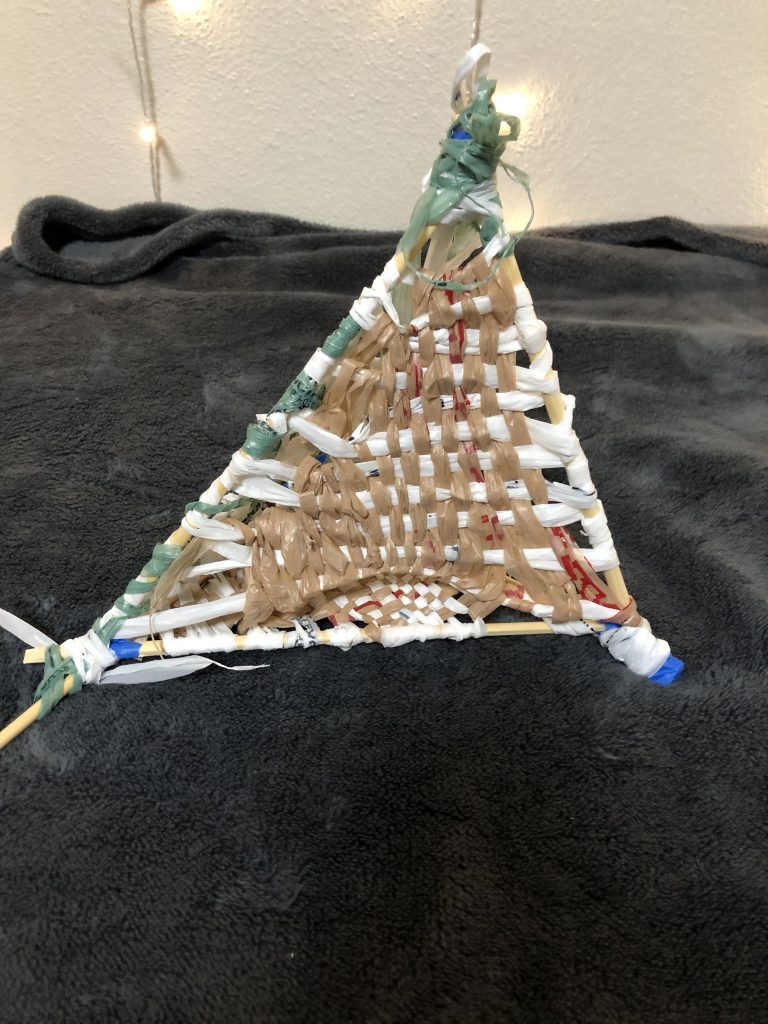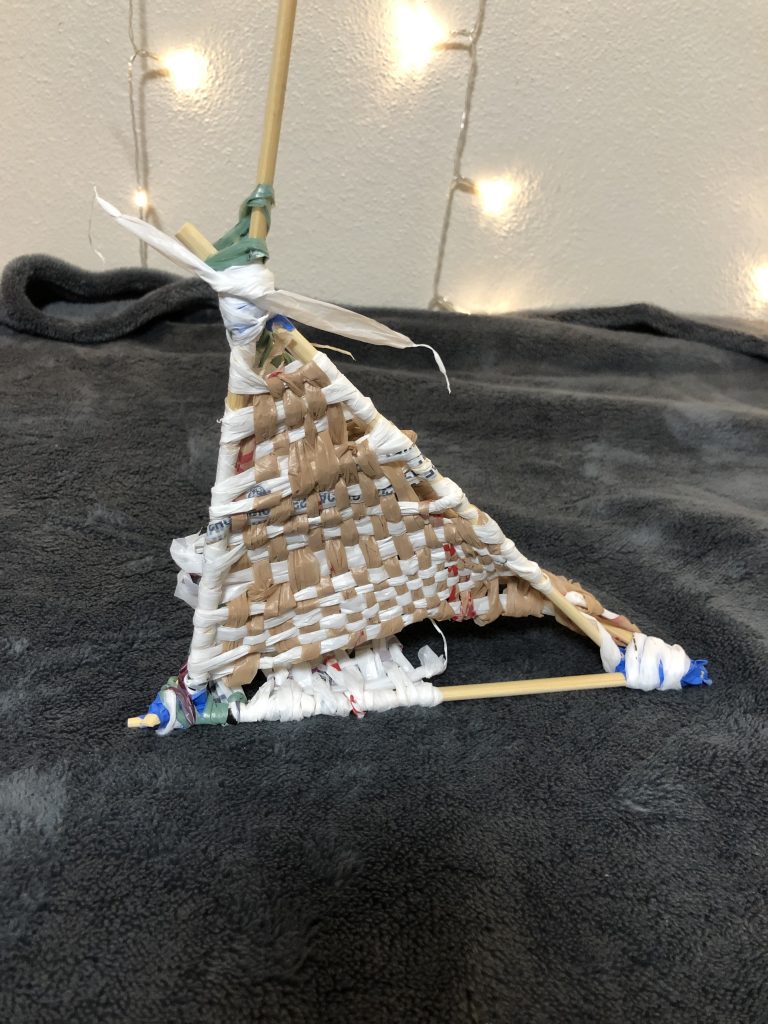For my final weaving, I was inspired by someone’s discovery of light going through the weft/warp. I decided to use my floor length mirror with tulle (from an old halloween costume) as the warp and weft. I would just like to note that my camera could not fully capture what the weaving looks like in real life and how light plays into the reflections.

In today’s society, body image and self-esteem is an issue for so many people, especially younger girls. By using the tulle to cover the details and somewhat “fog the mirror”. We constantly see ourselves under a microscope where no one else looks this closely so I wanted to emulate how other people see us less harsh than ourselves.
A challenge I faced was definitely the lack of structure in the tulle. As the warp, I had tied each piece of tulle around the back of the mirror which caused each strip to be bunched together rather then spread out like the vertical weft. Although this wasn’t my intention, the spaces between each warp draws attention to the emphasized features, especially one’s eyes.
I added the phrase “YOU ARE…” at the top to prompt affirmation of individual’s about themselves. Rather focusing on what one’s reflection is not, or what my not be good enough, I hope to evoke love from whoever looks in the mirror .
In a non COVID affected class, I would have loved to have each of my peers to write a words and place it within the weaving. But given that I am at home, I decided to give the viewer a decision on how they wanted to approach the mirror. I put opposite adjectives on each side of the mirror in jagged manner so that the viewer’s eyes would be drawn back and forth.
I am still unsure of how I feel about these additions and since they are paper within the weaving, I am able to easily change them if a new idea arises.
Furthermore, while I was walking around taking pictures of my weaving, I noticed that from far away, the reflection in the mirror were very clear but as you moved closer, it became more and more hazy/foggy. I kind of enjoyed this effect since it forces on to take a step back and see different perspectives of the mirror. I’ve attached a video to try and capture this quality but it doesn’t quite have the same effect in real life.
Lastly, I wish I had other materials that provided more texture to my weaving that I could have also used. I think the weaving would be more interesting if I had some sort of lace or ribbon to use.


